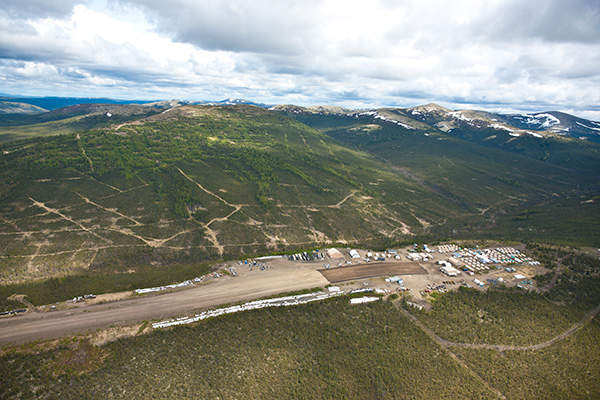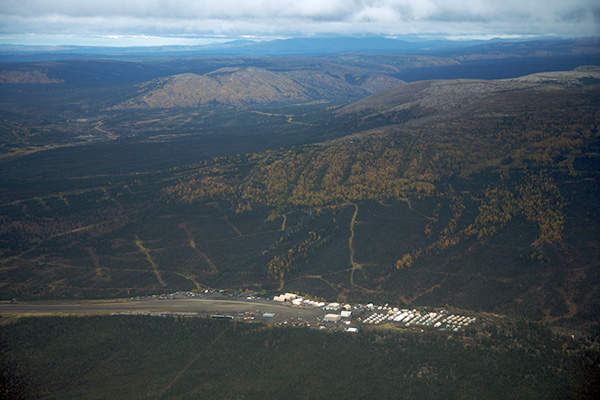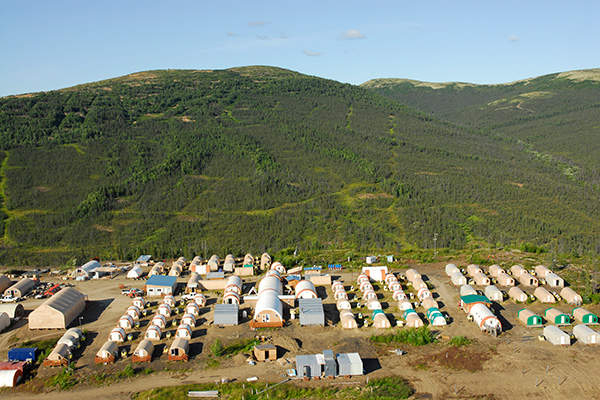
The Donlin Gold project in Alaska, US, is one of the biggest undeveloped gold deposits in the world. Novagold Resources and Barrick Gold USA, a subsidiary of Barrick, are developing the gold mine under a 50-50 joint-venture (JV) partnership called Donlin Gold.
Currently in the permitting stage, construction on the project is expected to start in 2016. It is estimated to produce 1.5 million ounces of gold during the first five years of operation and 1.1 million ounces during the rest of the mine life. The mine is expected to operate for 27 years at a processing rate of 53,500tpd.
The project is expected to create approximately 3,000 construction jobs and up to 1,400 operational jobs.
Location, geology and reserves
Donlin Gold mine, located approximately 250km north-east of Bethel, is being developed on a surface land leased from the Kuskokwim Corporation and Calista Corporation.
Asanko Gold Mine, situated in Ghana, one of the top ten gold producing countries, is Asanko Gold’s flagship project.
The deposit is part of the central Kuskokwim basin of south-western Alaska, which comprises marine volcanic rocks of Mesozoic age, Palaeozoic clastic and carbonate rocks, and Proterozoic metamorphic rocks.
The deposit is hosted in igneous rocks and is categorised as an extensive Late Cretaceous gold-arsenic-antimony-mercury hydrothermal system.
Gold mineralisation is found mostly in two deposits, ACMA and Lewis. The ACMA region is made up of intrusive sill and shale-siltstone sedimentary setting, while the Lewis region comprises sheeted veins with limited disseminated sulphide in the wall rocks and is made up of lower-grade and less-continuous mineralised zones.
Proven and probable gold reserves of the mine are estimated to be 33.9 million ounces grading 2.1g/t of gold.
Mining and processing of ore
Conventional drill and blast method of mining followed by load and haul methods using trucks and shovels will be employed at the open-pit mine. The major mining fleet will include Komatsu PC8000 electric-hydraulic shovels, one LeTourneau L-2350 front-end loader and Liebherr T282C trucks.
Run-of-mine ore will be directly dumped into the dump hoppers before crushing in a gyratory crusher. The crushed ore will be grinded in a semi-autogenous grinding mill before passing into the mill-chemical-float-mill-chemical-float (MCF2) circuit.
The MCF2 circuit will comprise primary and secondary ball mill circuits. Ore will be initially processed in the primary ball mill circuit, followed by primary rougher flotation. Primary rougher concentrate will be sent directly to the concentrate thickener. Tailings will be further processed in the secondary ball mill, which will be followed by rougher flotation.
The secondary rougher flotation circuit will be fed from the secondary rougher conditioning tank where copper sulphate and MIBC will be added. The secondary rougher concentrate will be cleaned in cleaner flotation cells bank before pumping to the concentrate thickener.
Flotation recovery will be thickened, autoclaved and washed in a counter-current decantation wash circuit before being processed in carbon-in-leach (CIL) cyanidation circuit.
Obtained concentrate will undergo electrowinning, resulting in the production of gold doré bars, which will be shipped to a refinery for further processing. Mercury will be captured in a mercury abatement system.
Tailings produced will be stored in a containment dam at the 1.75-mile (2.81km)-long tailings storage facility.
Construction and infrastructure
Infrastructure will include a power generation plant, mill, wastewater treatment plant, conveyor systems, warehouses, truck shop and offices. A 30-mile (48.2km)-long access road will be constructed from the mine site to the Jungjuk/Angyaruaq port site. A new airstrip, camp and port near Bethel will also be built.
Power required for the mining operations is proposed to be produced from the on-site natural gas-fired generation facility. Natural gas for the power plant will be supplied from the Cook Inlet region in Alaska, via a 312-mile (502km)-long, 14in-diameter steel pipeline.





